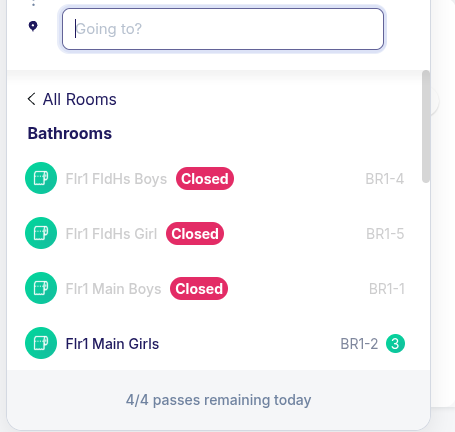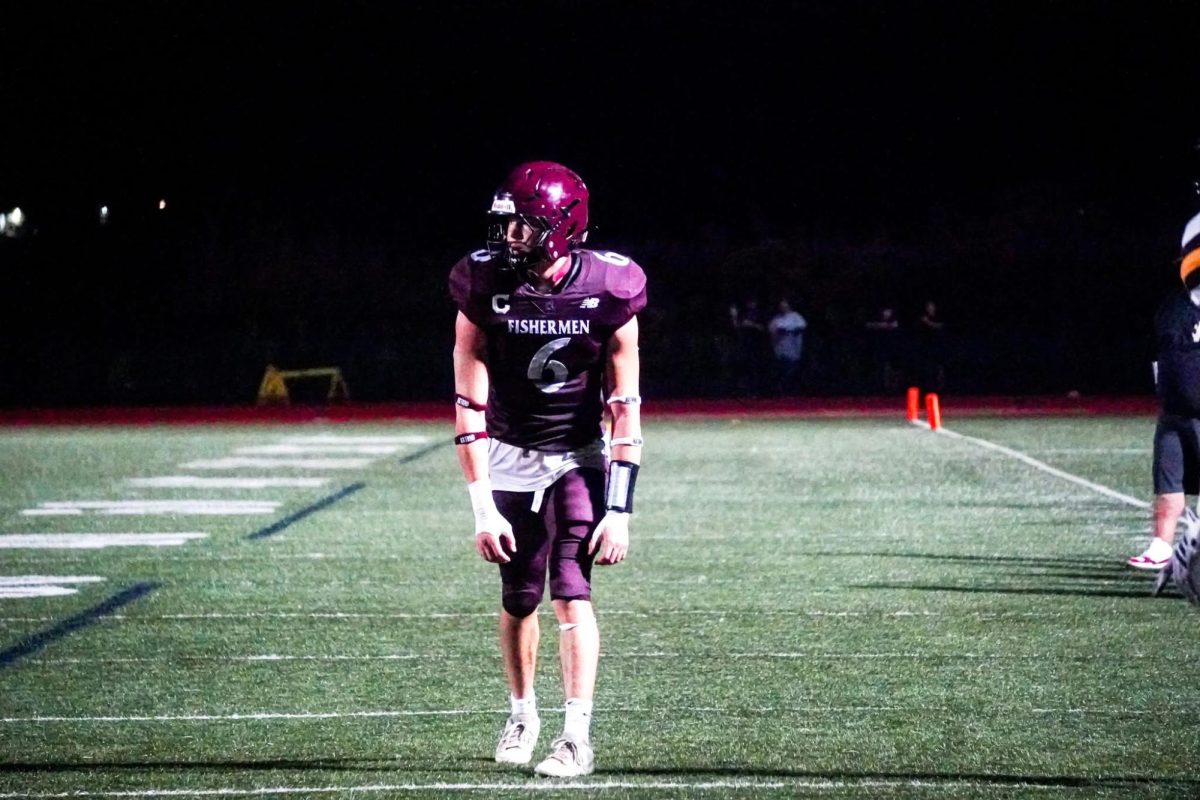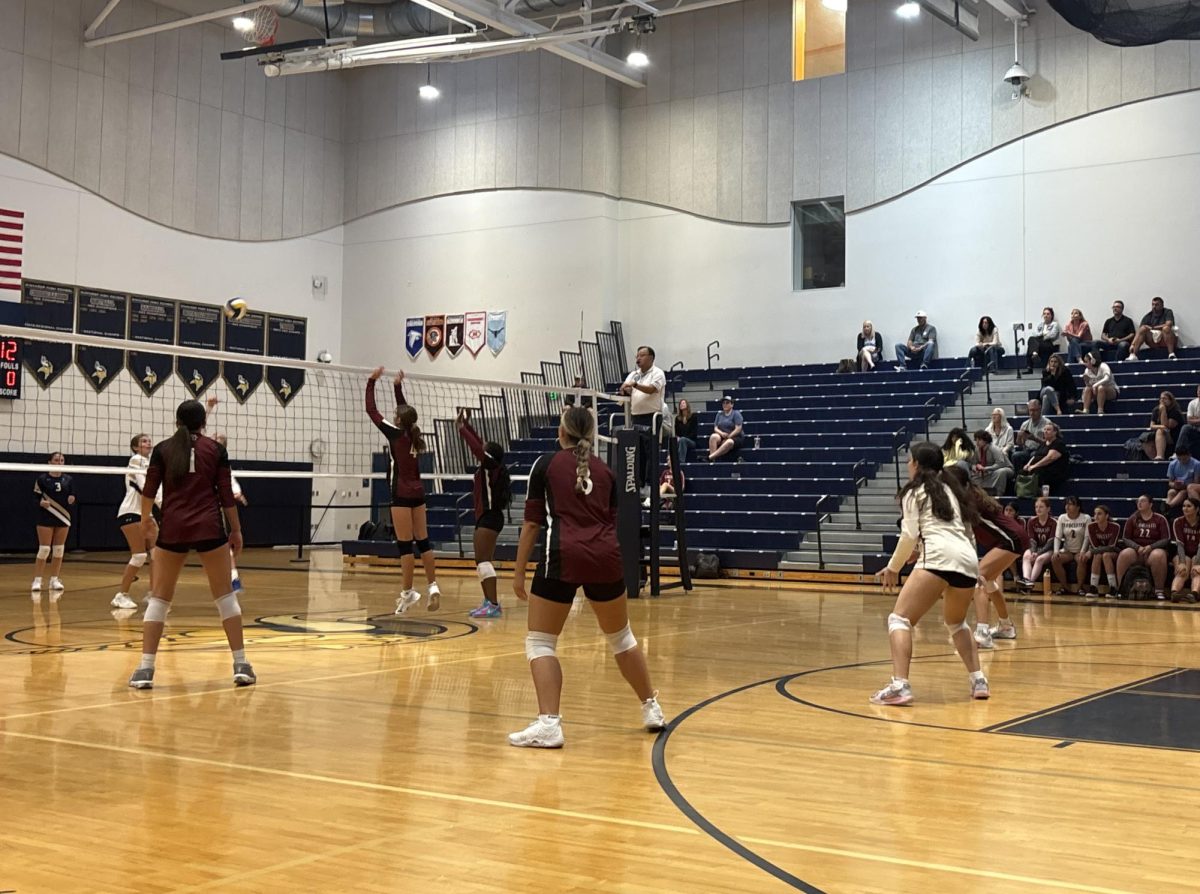
A few weeks ago, I was sitting in one of my classes, and, like one generally does during the day, had to use the bathroom. Instead of just raising my hand, asking if I could go, grabbing a pass, and leaving, I did what I knew I must:
I opened SmartPass.
But when I did, SmartPass stopped me with a red message that simply said “maximum hall pass limit reached”. Hmm, I thought. Strange, but probably just a glitch. I waited a minute or so and tried again, all the while unable to focus on my work because I had to make this pass in order to leave. I tried again. Same message. This is stupid, I thought, and eventually just went up to my teacher and asked to go. When he asked if I had made a SmartPass, I said that I had tried, but it hadn’t worked. The whole thing ended with him having to stop teaching and make a pass for me so I could get up and use the bathroom.
The fifteen student limit in the hallway and the three student limit in the bathrooms are undoubtedly useful when it comes to safety. Sometimes, two students cannot be near each other, so they mustn’t be able to leave class at the same time. Fifteen students means less fights, drama, and cacophony in the hallways during class time. Three students in the bathroom means that there is less risk of students meeting up to vape or cause trouble. But these policies disregard students who are honestly just trying to use the bathroom for its intended purpose—ultimately making using the bathroom into a privilege, not a right.
While I understand that GHS has a vaping problem and issues with people skipping class, the solutions that administration has chosen to implement are not permanent. They are only targeting a small part of a much greater issue, and they are inconvenient for the students who are just trying to take a rightful bathroom break during class.
With big tech taking over our schools, much of what used to be done physically (such as with bathroom sign out sheets) has been digitized and sold to schools with the notion that “it will make everything easier”. In reality, these “streamlined” technologies are not infallible, and more often than not are far more inefficient. In addition to this, bathroom trips being digitized means that bathroom trips can be tracked. We know, and have known, that nothing that happens on the Internet is temporary. There is undoubtedly someone in this school who knows about every time you have opened SmartPass today.
Which raises the question—how ethical is this data collection? Is SmartPass truly what students need in order to be successful in the classroom? Or is it just another big tech company trying to make an extra buck out of a school administration that is struggling to tackle its core issues?
Why SmartPass is inefficient in the classroom
As my experiences—and the experiences of numerous other GHS students indicate—SmartPass is inefficient in the high school classroom. With student attention spans already dwindling, having to pull out one’s Chromebook in order to go to the bathroom is only contributing to classroom disruptions and lack of attentiveness.
Students who need to use the bathroom during class have to pull out their Chromebooks and fill out a pass, which interrupts the flow of learning. If someone’s Chromebook is dead, then they have to charge it. If the WiFi isn’t working (a common occurrence in a public high school) then they have to wait for the application to load. If they are like me and get the notification that the “maximum hall pass limit has been reached” —an indicator that there are fifteen students in the halls at the time the student makes the pass—then they have to wait for an unknown amount of time in order to use the bathroom.
This is, of course, counting on the fact that all of these people who are out of class aren’t intent on skipping and will end their passes within the allotted time. In this way, only allowing fifteen students out of class at a time, out of a school that hosts nearly eight hundred, is not sustainable.
Policing students’ rights to use the bathroom
This fifteen person limit in the hallways and, on an even smaller scale, three person limit in the bathrooms, is not feasible for a school of GHS’s size. Worse, it fosters an environment of distrust between administrators and students due to the policing that must take place in order to enforce these policies.
It should be noted that SmartPass does not need to be used during the four minute passing period between two classes. If it is not working in the class, then someone can just wait until the class is over to go to the bathroom. This should work fine if someone does not want to pull out their Chromebook and fill out a SmartPass. But imagine, if you will, speed walking down the second floor hallway during passing period in order to use the bathroom before your next class starts. At most, you have maybe two minutes to go before you have to run to your class and ensure that you aren’t late. You know that this is your only chance for a bathroom break—or any sort of deserved break from the classroom at all.
However, when you arrive at the second floor bathroom, all you hear is a cacophony of yelling at students for pushing their way into the bathrooms and breaking the three person limit. It’s stressful. It’s loud. You’ll have to wait in a line that will last far longer than the four minute passing period, so it probably isn’t worth it to go then at all. Even worse, when an administrator does not happen to be there, then the bathrooms are chock full of people vaping who couldn’t manage to do so during regular classes. Either way, you aren’t getting that bathroom break you so desperately need. I know I didn’t.
The bathrooms themselves have about four to six stalls each. Only letting three people in—all while shouting at students to hurry up as they’re trying to go—is doing nothing to solve the alleged bathroom problem. If anything, it is only clogging up the bathrooms and stressing out the students using them even more.
People who actually need to use the bathrooms have to wait outside and are late to class when others take up too much time. Students who are using SmartPass have to wait until they are the “first in line” to get into the bathroom, and who knows how long that will take? When this happens, do we just have to stare at our computer screens during class, anxiously waiting for the line to update? What does that do to our attention on the lesson?
Shouting at students, denying them a bathroom break when they need one, and lurking outside the bathroom door while students go in and out does not sound like something that is conducive to creating a healthy school environment. And as someone who has witnessed these administrative demands in real time, I have to say: It definitely isn’t.
The bathroom policies are not stopping bad behavior
Some might say that SmartPass has been implemented to curb bad behavior—students who skip class, who vape in the bathrooms, who take a pass and leave for fifteen minutes. The ones we students all know about, because we sit (or, rather, don’t sit) in class with these students every single day.
As far as its uses go, SmartPass aids in preventing conflict from happening in the halls. There is a keepaway feature on the application that allows for students who have issues to not be able to leave the class at the same time. The three person limit prevents drama and fights that can happen in the bathrooms—one of the few places in the school that usually isn’t swarming with administrators to stop them from misbehaving. In addition, if a student is leaving class for long periods of time, administrators can see that—and they can very easily contact the students parents about the issue.
I must admit that I can sympathize with these struggles of students leaving class and not coming back. There is nothing more frustrating than trying to teach a lesson and having half of your class not be there. Since the data from SmartPass can be used to free up space in the bathrooms and prevent problem students from vaping or vandalizing the stalls, the policies should be helping someone like me—someone who is truly just trying to use the bathroom for its intended purpose.
However, these new SmartPass policies are not just punishing “those” students. Instead, they are punishing everyone who needs to use the bathroom. Even worse, the bathroom policies aren’t working, regardless of who isn’t let in.
As someone who has been in the bathrooms during passing period, I can confirm: People are still vaping and vandalizing. SmartPass has not fixed that, because students will always find ways around stubborn technology. Often, these ways are worse and more inconvenient for students trying to use the bathroom, because they are purposefully trying to hide from administrators and avoid punishment. The vaping in the bathrooms did not stop—it just transferred to other times of the day when students can actually get into the bathrooms without a SmartPass time limit, such as passing period and lunch.
I have never vaped in my entire life, nor have I ever skipped class, and yet I still cannot use the bathroom without there being some issue standing in my way: The bathroom is closed! Too many people in the halls! Someone barging in and telling me to hurry up! Six girls in there at once, all vaping in the stalls! None of this is normal. High schools should not have to function like this in order for their students to be successful.
If vaping and vandalism in the bathrooms really are this big of an issue, perhaps we should tackle the core issues themselves rather than smack a Band-Aid on them by closing the bathrooms altogether. For vaping, giving students non-judgemental, easy access to programs that can help them quit is one of the best solutions for harm reduction. For vandalism, if you must, have people sign in and out of the bathrooms with a sign out sheet, which can still keep track of people without crashing when the Wifi isn’t working or when there are too many people in the halls. It should also be noted that SmartPass does not stop people from barging into the bathrooms and damaging school property—it just gives them a time limit for doing so, or makes them do it more during free periods.
Ethical implications
Ultimately, SmartPass is helpful for tracking students who are not using the bathroom for its intended purpose—and to keep track of who is out of class at any given time. For instance, hall monitors can see student’s IDs that exist on SmartPass and identify who is going in and out of the bathrooms. Paper passes cannot do that. Administrators praise this application as it ensures student safety. Everyone knows where everyone is all the time. If a student is leaving class too much, SmartPass makes it easy to identify them.
While I agree that making GHS safer should always be a priority, all of these “safety measures” being digitized means that our data is being tracked. They don’t just know when the “bad” students are using the bathroom, they know when all of us do—down to the period in which we do so. Students are being tracked and having their privacy violated under the guise that it is for their own safety. That does not sound safe to me; it just sounds invasive and unnecessary for the problems that administrators are trying to solve. Personally, I do not feel comfortable with an online application, that the district pays for, knowing my restroom habits. No student being forced to use this application, and have their student ID photo appear on it, ever consented to that.
It is possible to make GHS safer without tracking our students. We can fix the GHS bathroom problem without preventing students from using them altogether. Schools have done it before big tech started taking over, and they can do it again. Controlling students like this will only lead to more rebellion and more chaos; chaos that, oftentimes, administrators are not able to see.
It is high time that we implement bathroom policies that reflect the needs of the GHS student body as a whole, not just for the misbehaving few.










![The GHS/MERHS senior cross country runners pose together on Senior Night. [Photo courtesy of Manchester-Essex Athletics]](https://thegillnetter.com/wp-content/uploads/2025/10/Screenshot-2025-10-10-at-11.18.29-AM.png)



















